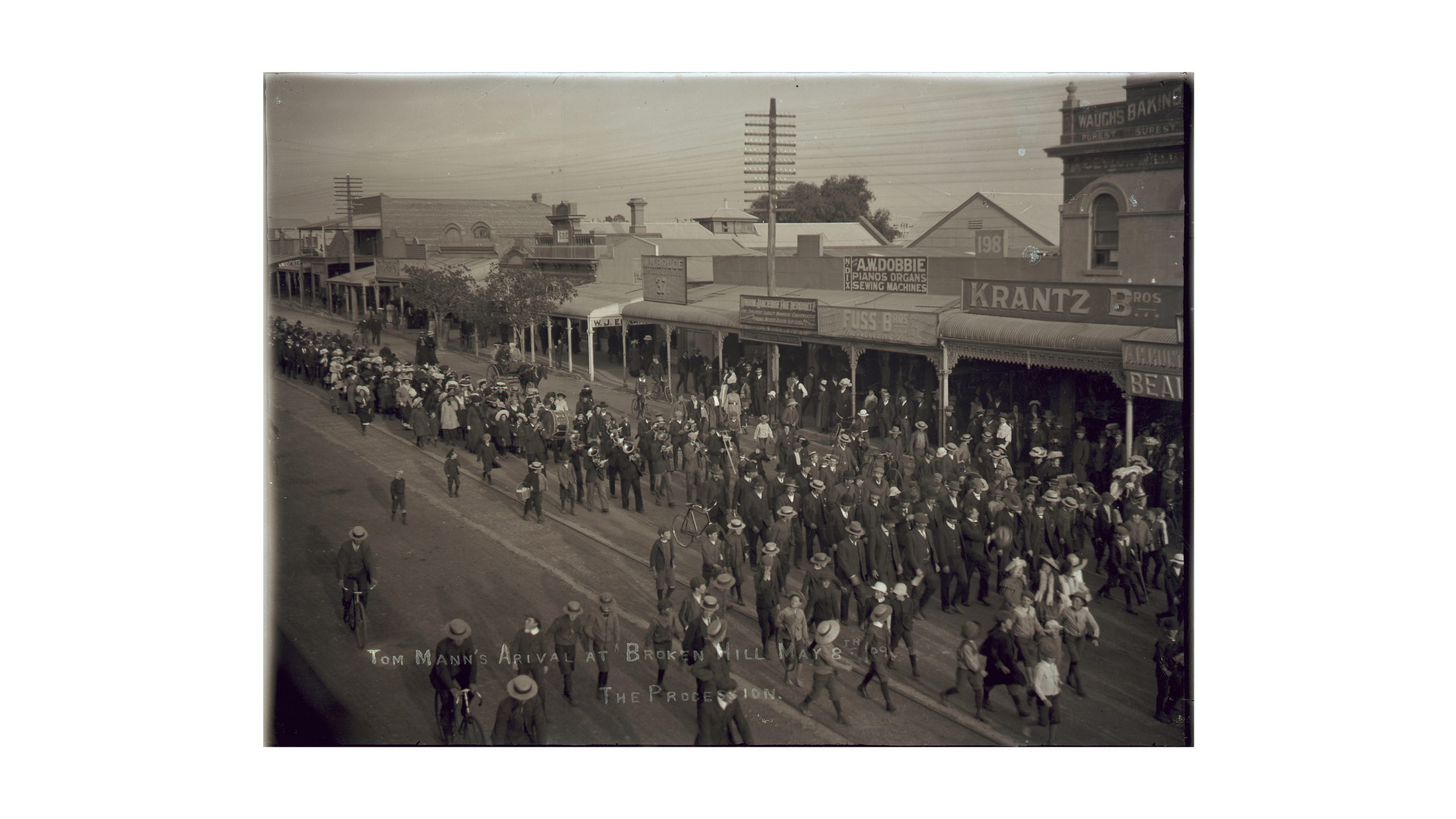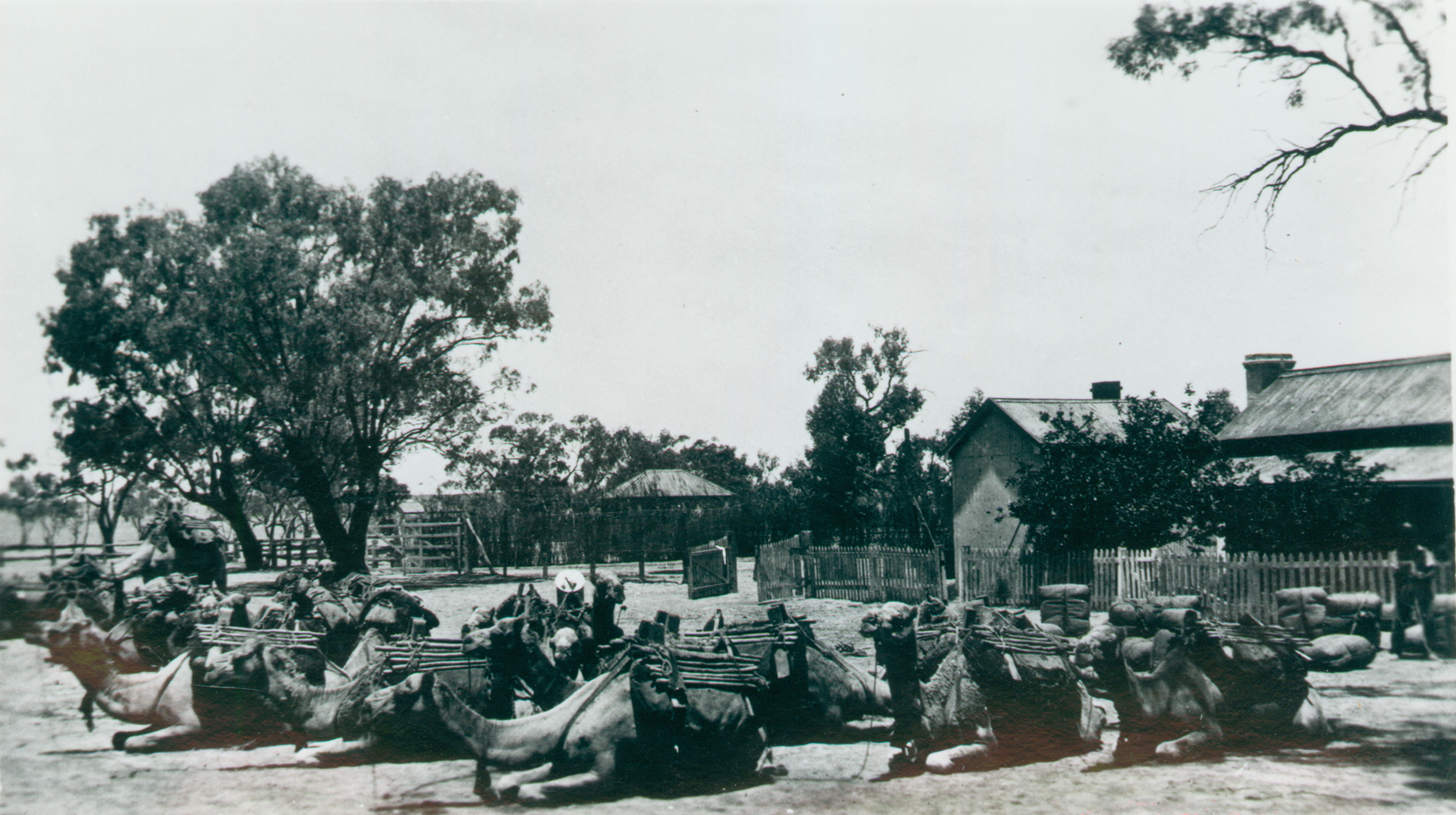All Aboard the Tom Mann Train
United They Travelled
Armed with just three years of schooling, British socialist Tom Mann became a globally influential union organiser during the early 1900s. When living in Australia he spent time on the historic 1909 picket lines at Broken Hill. His influence and time in the mining-town was documented by several local photographers, including James Wooler and the Brokenshire Brothers.
Born in 1856 in England’s West Midlands, Thomas Mann’s childhood and education were cut short to work underground in the Victoria colliery at the age of nine. His was a working-class family and child labour was common at that time. The young Mann found solace at Sunday school and became a man of strong faith.
Although Mann’s education was negligible, he completed an engineering apprenticeship in Birmingham, joined the Amalgamated Society of Engineers and became a prominent figure in the British Independent Labour Party. Mann’s formative years and religious inclinations were integral to his evolution into a spirited orator and passionate advocate for workers’ rights. He discovered socialism in the late 1870s and led the London Dock Strike of 1889 before moving to Melbourne in 1902, where he worked as an organiser with the Political Labour Council of Victoria.
In 1908 at Broken Hill, BHP announced wage cuts due to fluctuations in mineral prices. Negotiations were fraught, and the miners went on strike, triggering a lock-out by BHP’s management which lasted for twenty weeks. Thousands of workers held spirited marches accompanied by pipe bands. The protests alarmed the police, who feared that they might escalate into violence. Hundreds of reinforcements were sent from Sydney to quell the mood on the street.
Mann traveled to Broken Hill during the dispute and worked as an organiser for the Combined Unions Committee. He gave rousing speeches about the power of global unity among workers – he had great influence at Broken Hill and his rhetoric is credited with gaining ninety-six per cent union membership during the strike.
In January 1909 the police ambushed the workers as they marched. Mann was arrested, charged with sedition and unlawful assembly. He was released on bail but forbidden to speak publicly in NSW. Undeterred, the unions positioned Mann in Cockburn on the South Australian border, hired trains and transported thousands of people there to hear him speak.
When the Federal Arbitration Court ruled in favour of the unions in March 1909, BHP shut their mines for two years, forcing many miners to leave town. Tom Mann was later acquitted and left Australia in December 1909. He was unsuccessful in gaining a visa to return but the people of Broken Hill never forgot him and his portrait hangs in Trades Hall.






